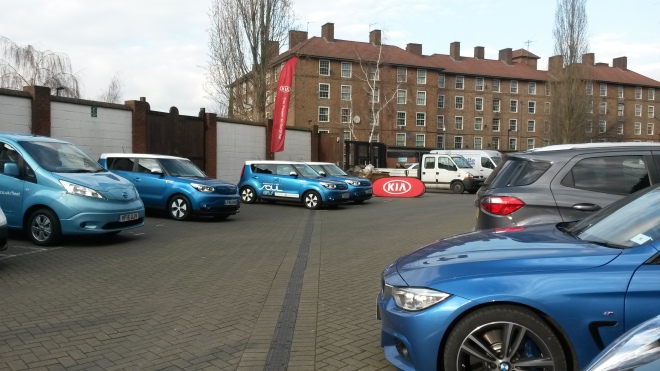
The new line-up of Top Gear was recently announced. However, I argue that there should have been space for a presenter from the 90s – Quentin Wilson.
Why? I am no car fanatic. Neither, am I an avid television watcher. The last time I remember seeing Wilson on the screen was during a performance as a competitor on Strictly Come Dancing a long long time ago. So, it is fair to say, I have not followed the presenter’s career too closely this century.
But, last week, at an event in a South London car park, I discovered he is a promoter of the uptake of low emissions vehicles in the UK. For my experiences of that day, I feel he should be offered a place among the new Top Gear team. Here’s what happened…
It all started with a phone call I received a couple of weeks ago. It was an invitation to a GreenFleet event up in Scotland. I must have been left on the mailing list. I politely declined but did hear that they were doing a much smaller, more exclusive event at the Oval cricket ground where I would be able to try out the latest in electric vehicles (EV). I was free that day so bring it on.
After mistakenly sitting down in a health conference, I found my way to the cars. And what a beautiful selection of vehicles they were. As I said before, I am no car fanatic and I do not manage a fleet, so I had to be excused for my ignorance. What I did know is that low emissions vehicles only account for about 1% of the UK vehicle market. The graph below is taken from the Office of Low Emission Vehicle’s Uptake of Ultra Low Emission Vehicles in the UK report. While the UK performs comparably to similar economies, it is possible to do a lot better (great work Norway).
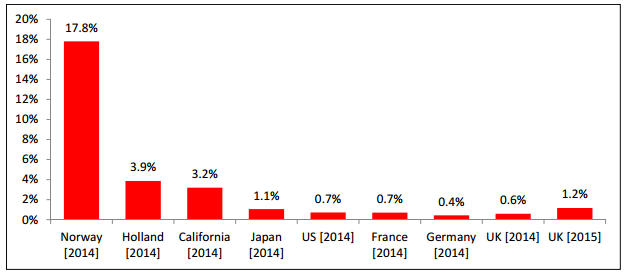
So, I framed my afternoon around one central question: Why are the barriers preventing people from buying low emission vehicles?
Range
The classic idea about EV is that they won’t get you very far and are only suitable for driving slowly around your neighbourhood at the perfect speed for delivering milk. I discovered the latest Nissan Leaf has a 30KWh battery, boasting a 155 mile range. This is not to be sniffed at. You could commute to from London to Brighton and not have to worry about finding a charge point during the day. Or if you lived 10 miles from work, that is a week’s worth of commuting on a single charge.
Drive
Then, I was invited behind the wheel of the Leaf. Akin to the first time I owned a Sony Walkman and the first occasion of zooming in on Google Earth, I was hit with that mild tingle of sublime as soon as I strapped into the cockpit. Using automatic transmission and swapping the handbrake for an extra footbrake made the experience novel. But, the game changer was the lack of revs. I had lost that audible acknowledgement of potential for movement. This vehicle just glided uncomplainingly to wherever I fancied.
I should have been playing a video game. The gear stick definitely belonged to an Xbox controller. Cameras model an overhead view of your vehicle so you could be playing Micro Machines when doing a reverse parallel park. And, you can of course get an app telling you all you need to know about how much charge is left, where your nearest point is and even to commence charging. I played the most conservative session of Grand Theft Auto while getting lost across Kennington and loved every second of it.
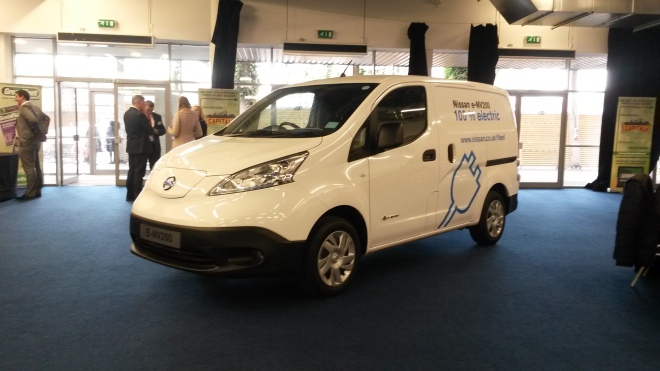
And, that was just one of a diverse fleet of EVs on the forecourt catering all types of driver and journey. If more people were having a go behind the wheel, I am sure there would be plenty more sales. As my instructor from Nissan told me ‘you give this car to someone for just one week, and they will never give it back.‘
Infrastructure
My next concern is about charging. For me, finding a parking space in urban areas is usually a textbook needle-haystack situation. But what about one with a charging point attached? Raising this in a round table discussion, Quentin Wilson relayed the statistic that 90% of EV users charge at home. It turns out charging at home is easier than I had assumed. Of course, longer distance travel is more difficult but there is an ever expanding charge network. The graph below shows you that the number of connectors has more than doubled in just two years.
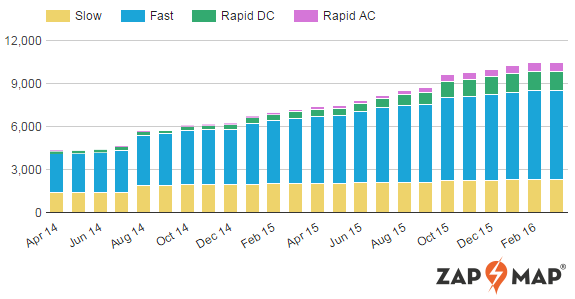
You can explore the ZapMap to see which are closest to you. I had no idea there was a charging point in my local council car park. You might be surprised too.
Cost
A grasp of any level of economics would inform you that the cost is the crux of the matter. New technology always costs more than the incumbent. You can get that Nissan Leaf I drove for about £20k. More expensive than similar conventional fuel vehicles. There are of course differences in running costs, policy incentives and monthly lease deals. A comparison of electric, diesel and petrol vehicle costs would be another blog post so I won’t go into detail here. All in all, if you were looking at buying a personal car in 2016 it looks like you will get a cheaper one by purchasing a conventional one in light of petrol price forecasts and cuts being brought in by the Conservative administration.
What about commercial fleets? The key issue is inertia. Representatives from large public organisations repeatedly talked about how they loved the idea of a fleet of EVs but they couldn’t get it through procurement. The spreadsheets aren’t set up for considering battery leases, electricity costs and charging point investments. Adding complexity to the finances is never going to incentivise a fleet manager to buy EV.
The good news on costs is that the margin between conventional and future vehicles is reducing. Battery costs are coming down. As this margin narrows, customer interest cannot help but soar.
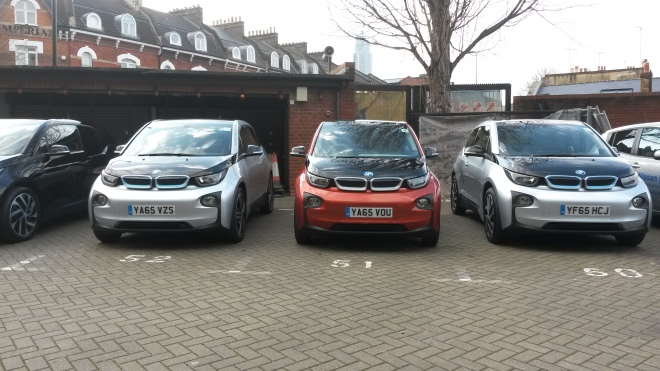
The future?
While costs remains a strong barrier to EV uptake, from that afternoon, I witnessed optimism and not just from the sales teams. Days like that allow negative perceptions to be removed from barriers like hinges from a door.
‘People’s reaction to electric vehicles is much more positive than before,’ Quentin Wilson said. ‘It has been a very very positive day’.
The thing that struck me most was the potential for public benefit if the individual invest. Looking out at the constantly moving car park, I realised the only noise I could hear was from the road outside. It was near silent. Imagine what a city would sound and smell like in the absence of internal combustion? People will get healthier lungs and could sleep a lot better.
The opportunities for public health should not be forgotten. Maybe next time that health conference I stumbled into could be sponsoring the EV event…
*
Huge thanks to GreenFleet for the invite and Nissan for letting me behind the wheel.
Go and experience EVs for yourself – check out GreenFleet’s event open to the public on 16 April 2016 in Scotland.